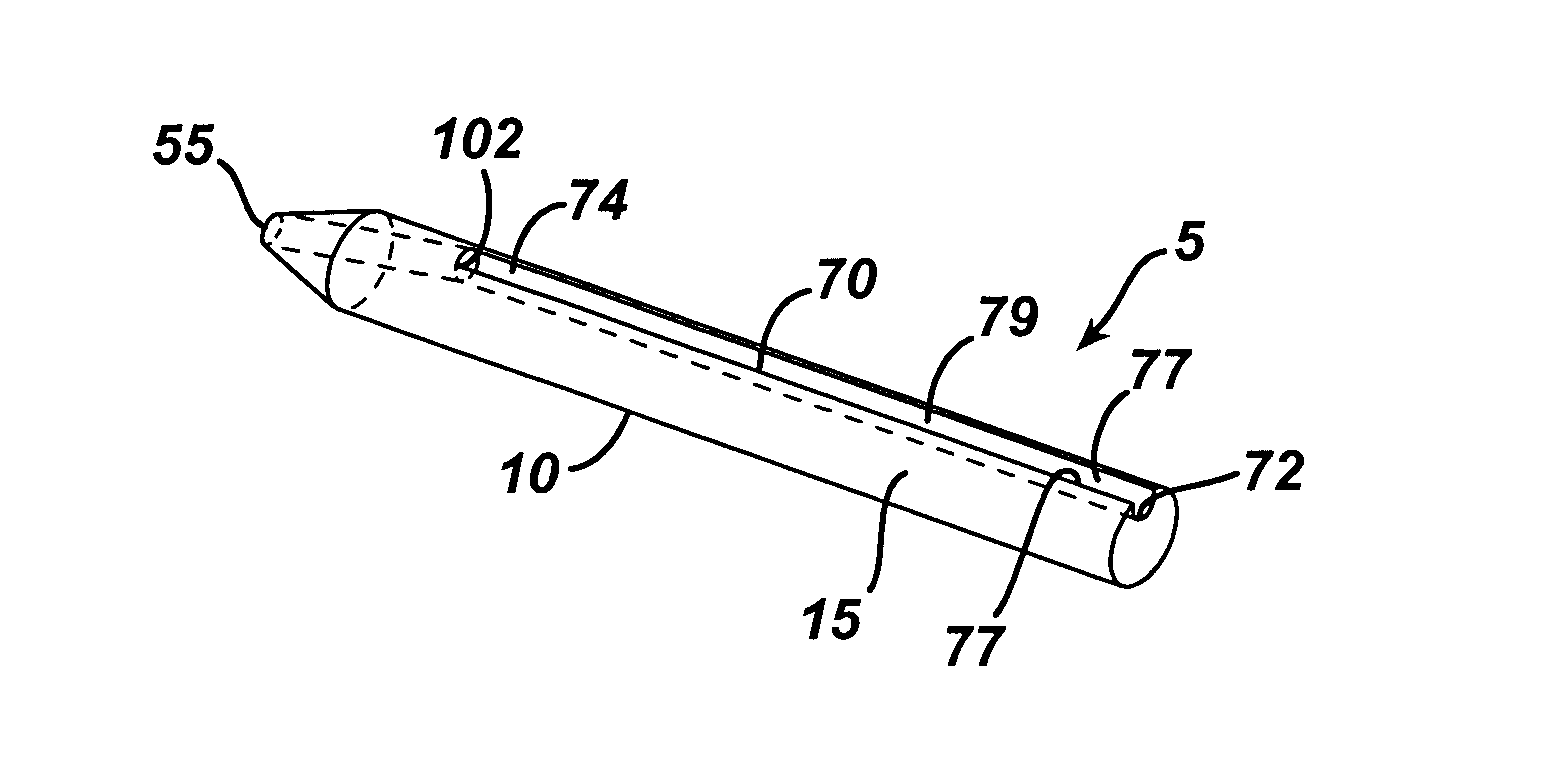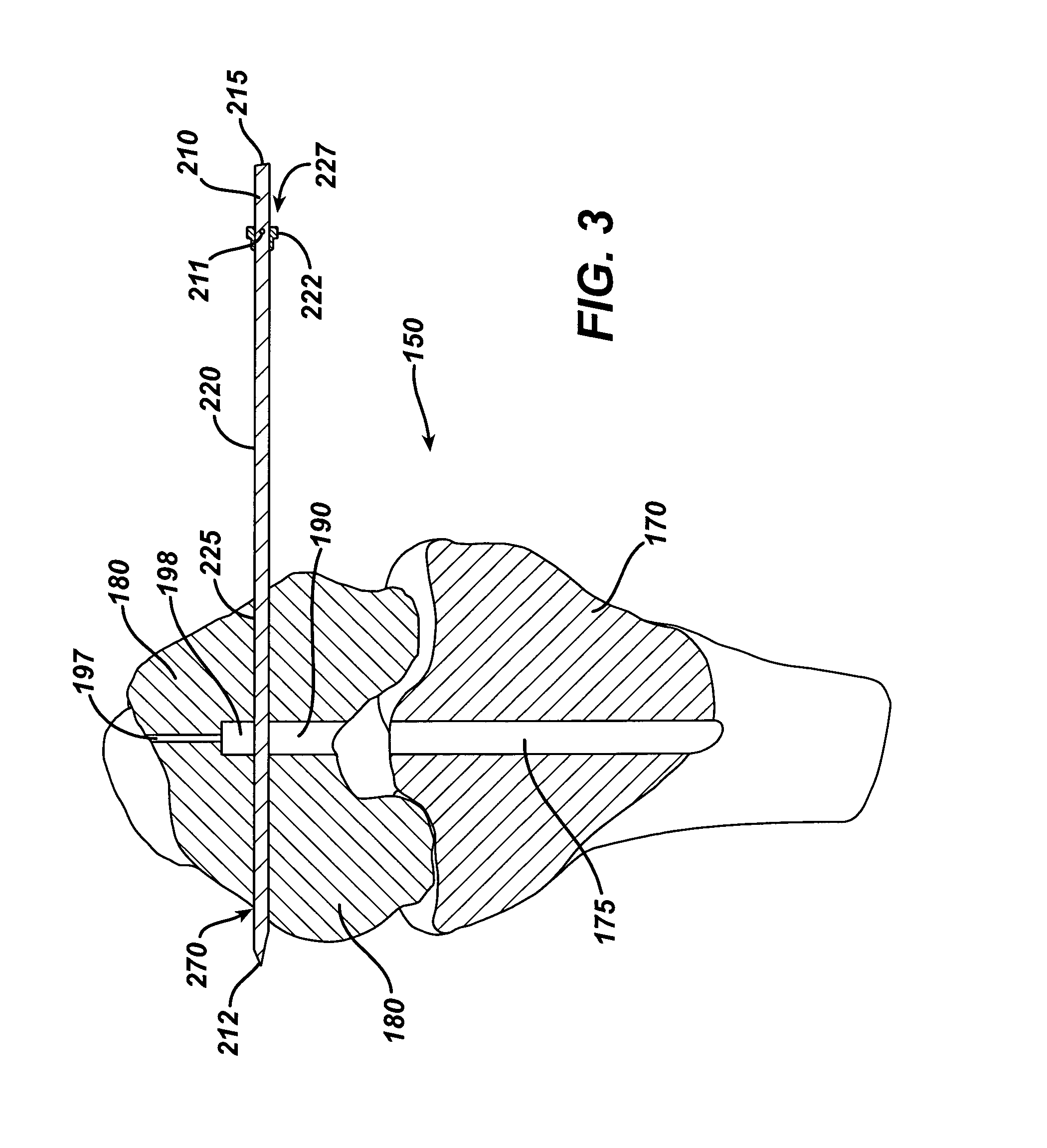Implantable cross-pin for anterior cruciate ligament repair
a cross-pin and anterior cruciate ligament technology, applied in the field of orthopaedic implants, can solve the problems that the acl cannot be repaired, or the acl is twisted or ruptured
- Summary
- Abstract
- Description
- Claims
- Application Information
AI Technical Summary
Benefits of technology
Problems solved by technology
Method used
Image
Examples
Embodiment Construction
[0015]The cross-pins of the present invention can be made from a variety of conventional biocompatible materials useful in implants. The materials may be absorbable or non-absorbable. Examples of conventional non-absorbable materials include surgical stainless steel, nickel titanium alloys, ceramics, Delrin, polyethylene, and other non-absorbable polymers including, but not limited to, polypropylene, and Acetal. Examples of bioabsorbable materials include PLA, PGA, polydioxanone, polycaprolactone, copolymers thereof, and the like. The term “natural polymer” refers to polymers that are naturally occurring, as opposed to synthetic polymers. In embodiments where the device includes at least one synthetic polymer, suitable biocompatible synthetic polymers can include polymers selected from the group consisting of aliphatic polyesters, poly(amino acids), copoly(etheresters), polyalkylenes oxalaes, polyamides, tyrosine derived polycarbonates, poly(iminocarbonates), polyorthoesters, polyox...
PUM
| Property | Measurement | Unit |
|---|---|---|
| biocompatible | aaaaa | aaaaa |
| bioabsorbable | aaaaa | aaaaa |
| shape | aaaaa | aaaaa |
Abstract
Description
Claims
Application Information
 Login to View More
Login to View More - R&D
- Intellectual Property
- Life Sciences
- Materials
- Tech Scout
- Unparalleled Data Quality
- Higher Quality Content
- 60% Fewer Hallucinations
Browse by: Latest US Patents, China's latest patents, Technical Efficacy Thesaurus, Application Domain, Technology Topic, Popular Technical Reports.
© 2025 PatSnap. All rights reserved.Legal|Privacy policy|Modern Slavery Act Transparency Statement|Sitemap|About US| Contact US: help@patsnap.com



